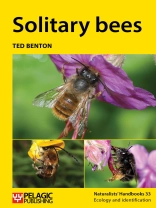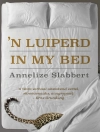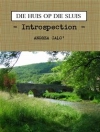In Britain and Ireland there are about ten times more species of solitary bee than bumblebee and honeybee combined, yet the solitary bees tend to be ignored and we know much less about them. They are a fascinating, attractive and diverse group that can be found easily in a wide range of habitats, both urban and rural, and they are important as pollinators.
Solitary bees provides an introduction to the natural history, ecology and conservation of solitary bees, together with an easy-to-use key to genera.
Chapters cover: Diversity and recognition; Bee lives; Cuckoos in the nest; Bees and flowers; The conservation of solitary bees; Approaches to practical work; Keys to the genera of bees of the British Isles – Females and Males; and References and further reading.
Table des matières
1 Introduction
2 Diversity and recognition
3 Bee lives
4 Cuckoos in the nest
5 Bees and flowers
6 The conservation of solitary bees
7 Approaches to practical work
8 Keys to the genera of bees of the British Isles
9 References and further reading
Index
A propos de l’auteur
Ted Benton is emeritus professor of sociology at University of Essex, where he has pioneered the integration of ecological understanding with social theory. He has been an active field naturalist since childhood, and is author or co-author of eight books on entomological topics, in addition to his academic publications and a recent book on Alfred Russel Wallace. His two books in the New Naturalist series (Bumblebees (2006) and Grasshoppers and Crickets (2012)) have both been highly praised. He is hon. President of Colchester Natural History Society, a founder member of the Red-Green Study Group and is involved in environmental campaigning.












